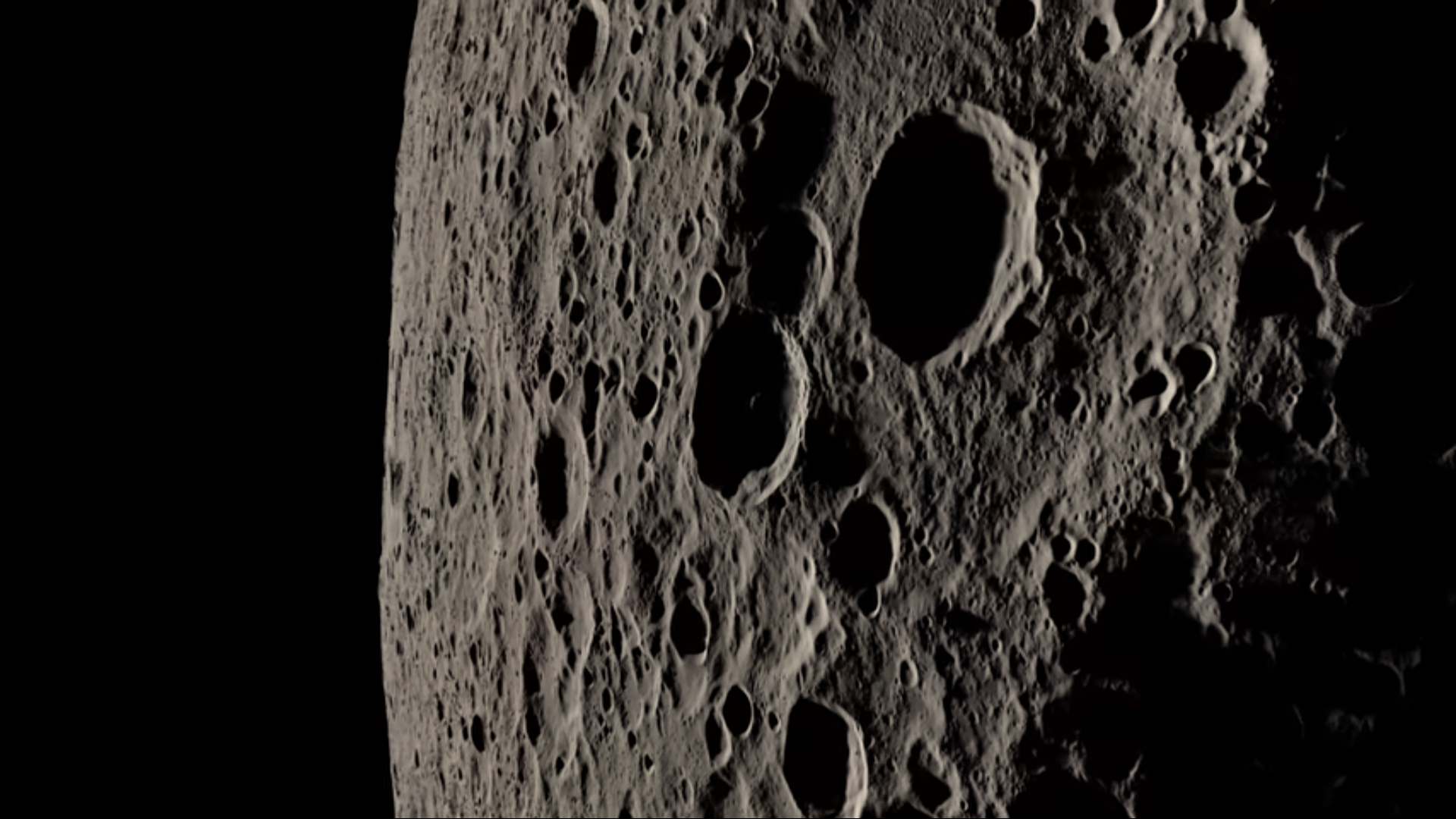This stunning 4K video re-creates Apollo 13's perilous trip around moon
Astronauts aboard the Apollo 13 spacecraft had survived an explosion and reduced oxygen before their next tricky venture, on April 14, 1970: a 25-minute pass by the far side of the moon, out of communication with Earth.
Now, you can see a portion of the Apollo 13 astronauts' view of the moon's far side, thanks to a new video courtesy of NASA's Lunar Reconnaissance Orbiter (LRO).
LRO is optimized to zoom in on small targets on the surface of the moon. The spacecraft's results have been used for everything from identifying permanently shadowed water ice, for potential use in future human landing missions, to photographing Apollo landing sites from the 1960s and 1970s.
Related: 'Apollo 13' launching back into theaters anniversary
The Apollo 13 crew never had the chance to land on the moon. Their craft was en route to landing when an oxygen tank exploded in a service module on April 13, 1970, forcing mission planners to reroute with a backup plan. The astronauts, fortunately, were unhurt in the explosion. But the damage ripped out oxygen tank lines and damaged the command module spacecraft, called Odyssey. This module was designed to bring astronauts through Earth's atmosphere at the end of the mission.
NASA had to quickly figure out how to keep the astronauts alive for four days on the journey home, as they were not going to be landing on the moon. The agency directed the astronauts to power up the other, undamaged spacecraft on the mission — the lunar module Aquarius — and do several engine burns with that module's descent engine. The engine burns were needed to complete the astronauts' path through space, to loop around the moon and come back to Earth. (Doing a straight turn-around abort wasn't possible, because only Odyssey had a powerful enough engine to accomplish this, and that engine was assumed to be damaged in the explosion.)
With the astronauts already in such danger, going behind the moon added another layer of stress, because the crew was unable to communicate with Earth during that time. However, they came through OK, and this new, 4K LRO video shows, in stunning detail, several landmarks they would have seen on the far side of the moon.
Breaking space news, the latest updates on rocket launches, skywatching events and more!
In the video, you can see craters on the far side of the moon pop up along the horizon as the spacecraft flies above the 4.5-billion-year-old rocky satellite. The camera lingers for a while on a crater with a mountain at its center. And soon comes that special moment when Earth pops up above the horizon, so you can see home from the craft once again.
"This video uses data gathered from the Lunar Reconnaissance Orbiter spacecraft to re-create some of the stunning views of the moon that the Apollo 13 astronauts saw on their perilous journey around the far side in 1970," NASA's Goddard Space Flight Center said in a statement released with the YouTube video.
Goddard noted that the astronauts did not see landmarks whiz by as quickly as viewers do in the video. "All views have been sped up for timing purposes — they are not shown in 'real time,'" the center added.
Despite turning into a life-saving flotation device when it was meant to land astronauts on the moon, the Apollo 13 Aquarius lunar module performed incredibly well during the mission. The Apollo 13 astronauts — Jim Lovell, Fred Haise and Jack Swigert — made it home safely, with only minor injuries, despite living for four days in the spacecraft with little heat or water available. Lovell and Haise are still participating in public events, at ages 91 and 86, respectively; Swigert died of cancer in 1982, at age 51.
This April will mark the 50th anniversary of the Apollo 13 mission. The astronauts themselves will participate in events in New York state, Florida and Kansas during the month, and more appearances may be announced in the coming weeks.
- Failure was not an option: NASA's Apollo 13 mission of survival in pictures
- How Apollo 13's dangerous survival mission worked (infographic)
- Destination: Moon — what to watch for the Apollo 11 50th anniversary
Follow Elizabeth Howell on Twitter @howellspace. Follow us on Twitter @Spacedotcom and on Facebook.
OFFER: Save at least 56% with our latest magazine deal!
All About Space magazine takes you on an awe-inspiring journey through our solar system and beyond, from the amazing technology and spacecraft that enables humanity to venture into orbit, to the complexities of space science.

Elizabeth Howell (she/her), Ph.D., was a staff writer in the spaceflight channel between 2022 and 2024 specializing in Canadian space news. She was contributing writer for Space.com for 10 years from 2012 to 2024. Elizabeth's reporting includes multiple exclusives with the White House, leading world coverage about a lost-and-found space tomato on the International Space Station, witnessing five human spaceflight launches on two continents, flying parabolic, working inside a spacesuit, and participating in a simulated Mars mission. Her latest book, "Why Am I Taller?" (ECW Press, 2022) is co-written with astronaut Dave Williams.


